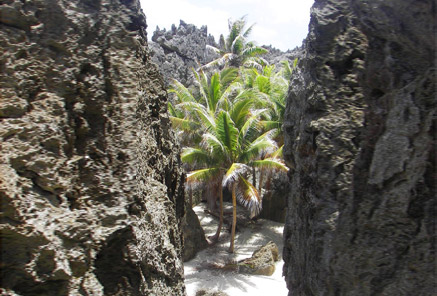Niue
Geography
Land Use
People
Economy
Water Statistics
|

Status of Water Resources
In 2003, approximately 85% of water pumped from the underground lens was used for domestic purposes, 10% for agricultural use and 5% for commercial and industrial usage. 2006 figures (provided by the Water Division, PWD) showed 80% for domestic use, 15% for agricultural use and 5% for commercial and industrial use; an increase for agricultural purposes is noted.
Niueans in the past were encouraged to build water tanks as catchments to harvest rainwater to supplement the public system, to cater to demand during cyclones and in periods of power failure. All newly constructed houses are subject to Building Code standards, and water tanks are now a compulsory requirement of a house.
Problems with Water Resources and Associated Environment Issues
Niue cannot continue to depend entirely on its underground water lens as the only source of fresh water; with the planned increase in economic development activities, rainwater harvesting as a supplementary source ought to be vigorously pursued. Rainwater harvesting at the village level and at household level, would provide a back up source. There should be reserve tanks, with the capacity not only to cater during disasters and power failures, but for daily use as well.
The increase in land surface activities may compromise the quality of the water lens. A study carried out by SOPAC on coastal water quality in 2003, was initiated due to fish poisoning outbreaks and fish deaths. The study confirmed a high nitrate and phosphate concentration believed to be caused by inadequate wastewater treatment primarily from septic tanks draining into the groundwater regime. The survey highlights the vulnerability of Nite’s water resources to any land surface activities and the close link between land and catchments activities and coastal zone impacts. Regular quality checks by the Department of Health should be undertaken.
The whole island depends on water pumped from the underground lens. Currently the domestic use of 80% of the water pumped from underground is the priority use followed by agriculture, and commercial and industry. With the expected increase in tourist accommodations, agriculture and fishing industries the level of different uses will progressively change.
Diagnostic Report
Demonstration Proposal
Hot Spot Analysis
Information on this page obtained from Integrated Water Resources Management programme's Diagnostic Reports (SOPAC 2007)
















